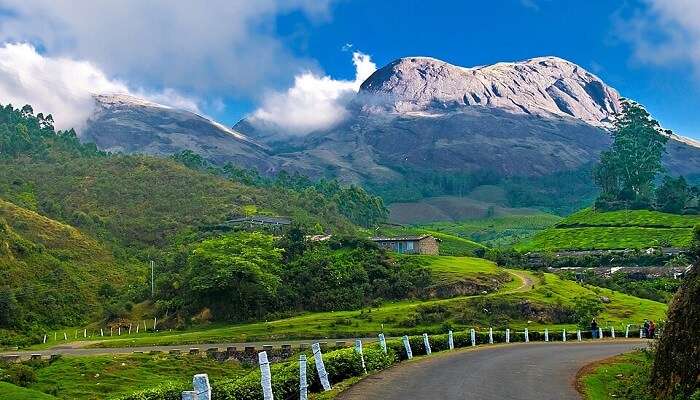A Guide To The Hidden Gem Of Mongar In Bhutan
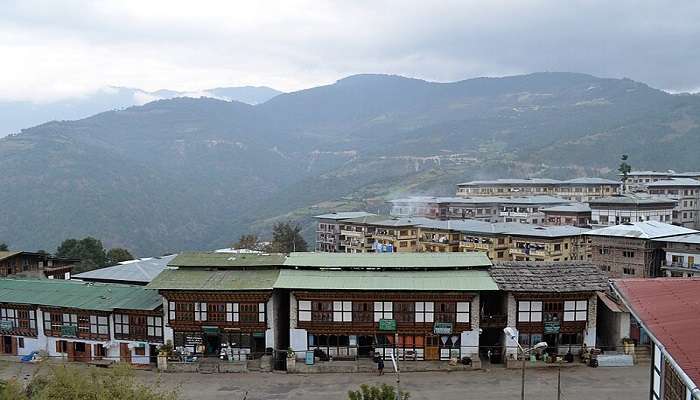
Mongar is a hidden destination in the middle of eastern Bhutan and is said to be a place that guarantees an authentic and unforgettable experience. Mongar is a place where time stands still, allowing you to find solace in nature, experience local culture and build memories for life. Mongar Dzongkhag, a fortress-like monastery, is an embodiment of diversity. Several ethnic groups live there, contributing immensely to Bhutan’s cultural heritage. Whether you are an adventurer, a person keen on cultural traditions, or simply someone tired of everyday life routine, Mongar has something special for everyone.
Things To Do In Mongar Bhutan
Mongar provides tourists with a mesmerising mix of natural splendour, vibrant cultural heritage and genuine experiences. An unexplored territory for travellers that plunge into the essence of Bhutanese life surrounded by stunning scenery and friendly locals.
1. Integrated Horticulture Farm: Exploring Organic Delights
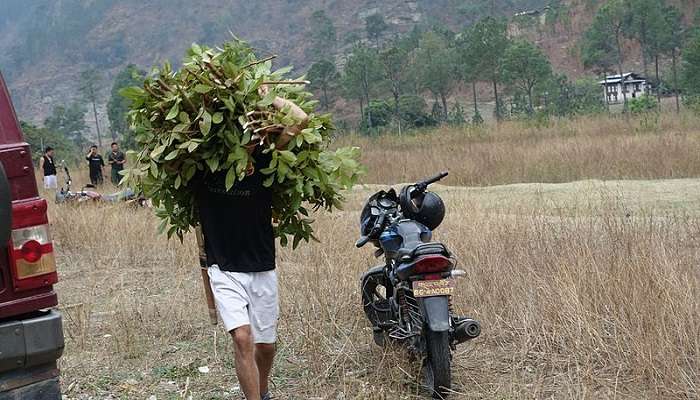
The beautiful farms are a sign of Bhutan’s commitment to eco-friendly farming, and it offers its guests a unique chance to be in touch with the earth and understand that humans can live together with nature in harmony. As you stroll around fruit orchards and vegetable gardens, you will be amazed by the fragrances of freshly harvested vegetables. You can engage in discussion sessions with farmers deeply rooted in time-old customs of organic agriculture. This place also allows one to relax amidst nature. You can also participate in programs depicting how organic farming is done through proper sustainable measures.
Best Time to Visit: March to May and September to November
Famous For: Farm-to-table experiences and sustainable agriculture
Also Read: Ringpung Dzong
2. Mongar Town Exploration: Immersing In Local Culture
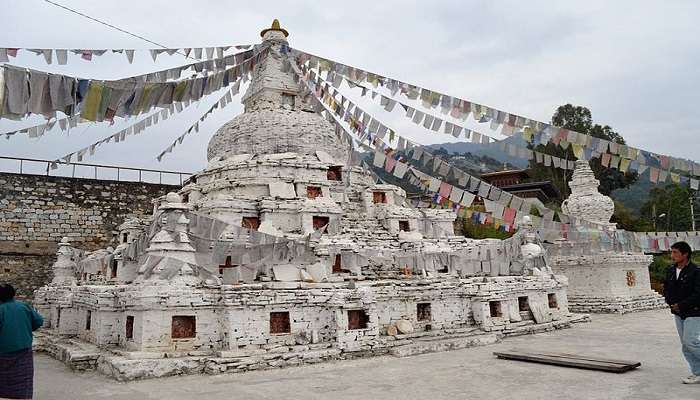
Dive into the colourful Mongar town where Bhutan’s spirit can be seen in every corner. You can travel through crowded markets where vendors proudly display their belongings from fresh produce to fine crafts. Engage in conversation with cheerful locals, who laugh with infectious smiles indicating how warm Bhutanese citizens are. Traditional music, dance and art performances present the town’s cultural vibrancy which has been passed on through generations. You can also visit monasteries where you can see various acts or rituals carried out by believers helping you understand what spirituality means to them.
Best Time to Visit: Throughout the Year
Famous For: Traditional markets and cultural experiences
3. Traditional Archery Experience: Channelling Bhutanese Spirit
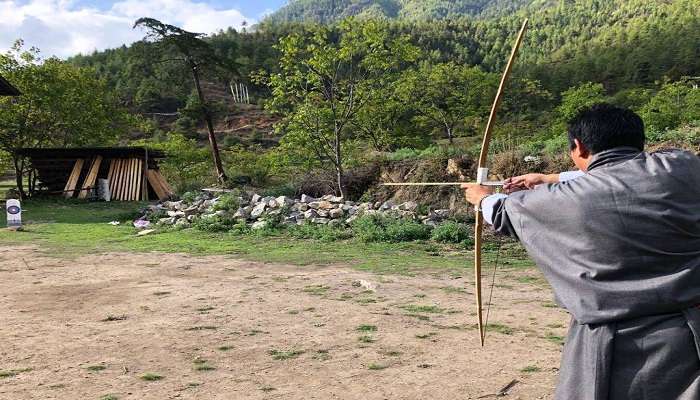
Unleash your inner archer and embrace what it means to be Bhutanese by taking part in the traditional archery game. This ancient sport is embedded deeply into the soul of Bhutanis’ and it goes beyond mere fun. Just like any other game, it serves as a bridge that links you to the Bhutanese culture. Captivating spectacles of local archers competing in traditional tournaments show the intensity and skill inherent in this ancient sport. Discover the cultural importance of archery in Bhutanese society, learn why it is considered a national sport and how all its traditions can be traced back to some of its old beliefs.
Best Time to Visit: Throughout the year
Famous For: Traditional archery and cultural camaraderie
Related Post: Valleys In Bhutan
4. Rural Village Experience: Embracing Authentic Bhutanese Life
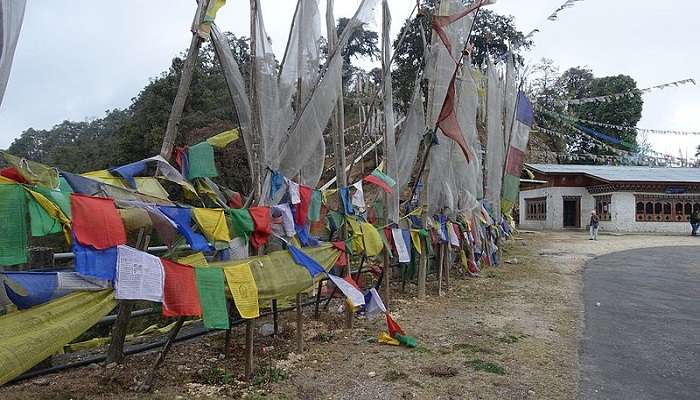
Leave behind your modern life chaos and experience the peace of rural Bhutan. You can participate in various activities from planting crops to breeding animals. You can also have great culinary experiences by having meals cooked with love using homegrown vegetables that give taste buds an adventure through authentic flavours of Bhutanese cuisine. You will meet friendly people who are living together with nature, simply and beautifully, in rural communities. As you observe such strong relationships between them, you will understand what it means for a village to be a community where people cooperate for their mutual benefit.
Best Time to Visit: Throughout the year
Famous For: Traditional village lifestyle and warm hospitality
5. Kurichu River Rafting: Conquering The Rapids
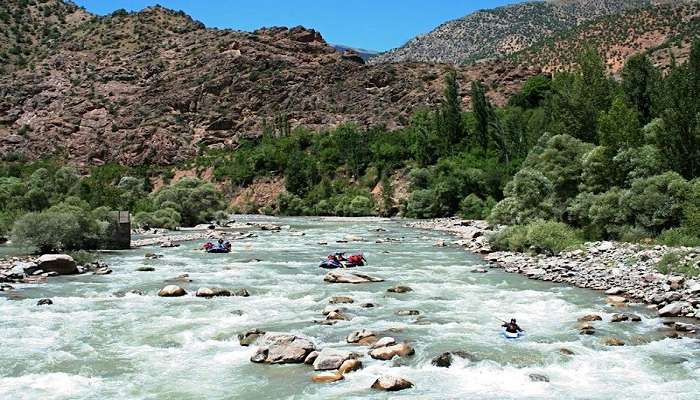
For those yearning for adrenaline, a visit to the fast-flowing Kurichu River is a must. Fasten your safety belt and take part in a thrilling white-water rafting adventure which will see you navigate through rapids that will test your nerve and expertise. The most significant thing about this trip is not only conquering the river but feeling great about it as well as remembering it for the rest of your life. This is where camaraderie among fellow rafters develops when facing individual challenges along such rivers making them life-long friends.
Best Time to Visit: March to May and September to November
Famous For: Adventurous water sports and scenic river landscapes
Related Post: Bhutan Hill Stations
Famous Attractions In Mongar
Mongar offers a perfect blend of natural beauty, cultural vibrancy, and spiritual calmness. The region promises an unforgettable experience right from ancient fortresses, sacred caves explorations to trekking across untouched national parks.
1. Mongar Dzong: A Majestic Fortress
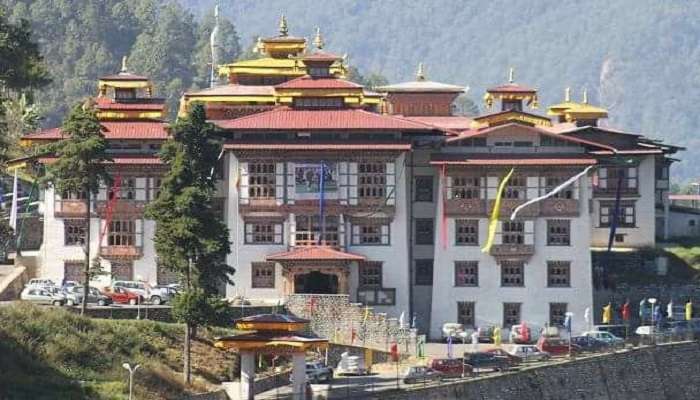
The dzong looms large over Mongar’s skyline representing Bhutan’s immense power. This architectural marvel blends a fortress with a monastery reflecting the socio-religious beauty that makes this nation unique. It’s impressive from the outside with its whitewashed walls and wooden carvings. It is like a maze of courtyards, temples and offices from inside. The interior is adorned with intricate thangkas, murals and sculptures that depict Buddhist mythology and historical events. A visit to Mongar Dzong is not just about seeing it but returning to when Bhutan had a rich history and cultural heritage.
Best Time to Visit: March to May and September to November
Famous For: Architectural grandeur and panoramic views
2. Yagang Lhakhang: A Spiritual Haven
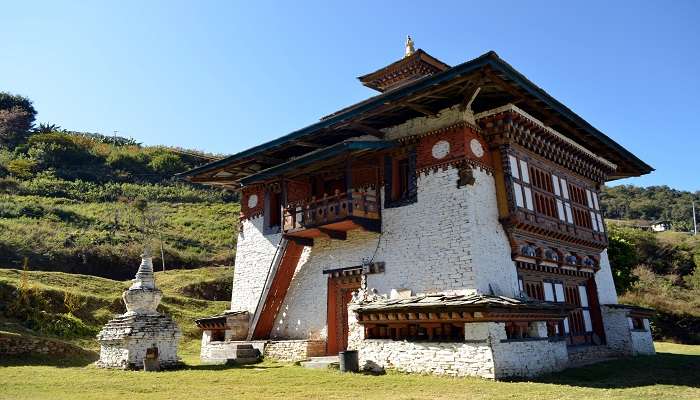
With picturesque surrounding landscapes, Yagang Lhakhang is a serene spiritual centre that encourages reflection upon oneself. It is a timeless, simple yet elegantly designed ancient temple. The inner walls of the temple are adorned with exquisite pictures and statues. The atmosphere of spirituality in the air is filled with murmurs from prayer wheels as well as soft chanting from monks that create an ambience suitable for meditation. Yagang Lhakhang provides a perfect escape from today’s busy life. Whether longing for peace of mind or looking for blessings, this holy place always has something to offer to everyone.
Best Time to Visit: February to April and October to December
Famous For: Tranquil surroundings and Bhutanese Buddhist spirituality
Related Post: Tourist Places In Bhutan
3. Phrumsengla National Park: A Nature Lover’s Paradise
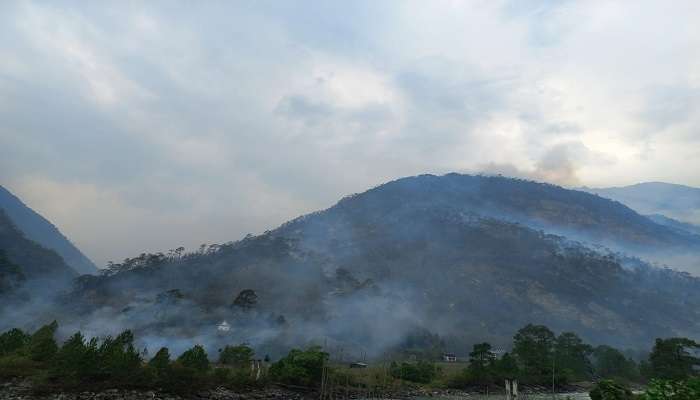
Phrumsengla National Park serves as a wilderness paradise for both adventurers and nature lovers. It harbours an enormous variety of plant and animal species making it one of the most biologically diverse places on earth. This park provides habitat to rare animals like red panda, takin or musk deer. Exploring different ecological zones within the park can be quite rewarding as you will have a chance to see clean streams and hidden valleys/pastures. Those who seek solitude or revitalization can camp here. Phrumsengla National Park epitomises Bhutan’s commitment to conservation.
Best Time to Visit: March to May and September to November
Famous For: Biodiversity and pristine natural landscapes
4. Aja Ney: A Pilgrimage To Sacred Caves
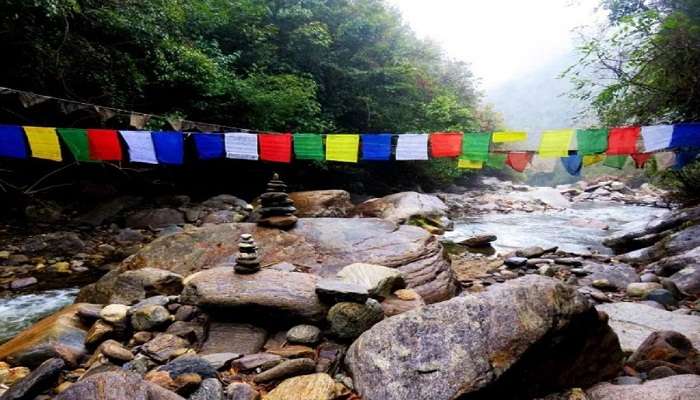
Aja Ney is a holy place, which is imbued with deep spiritual meaning. It attracts pilgrims and seekers from all over the world. Located amidst awe-inspiring landscapes, this sacred spot is thought to be a path towards enlightenment. The journey to Aja Ney rivals the destination itself because you go through forests and discover unseen waterfalls. Nestled inside these sacred caves are natural formations, prayer flags and an ambience of devotion and tranquillity. Many visitors often undergo feelings of peace and unity with nature during their stay at Aja Ney.
Best Time to Visit: April to June and September to November
Famous For: Spiritual significance and sacred caves
Related Post: Kurjey Lhakhang
5. Drametse Lhakhang: Witnessing Traditional Performances
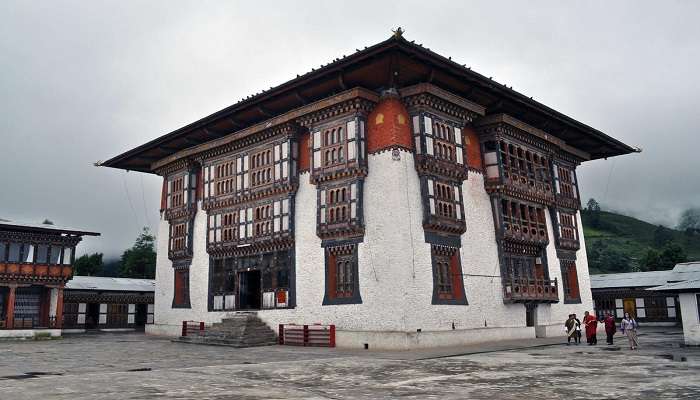
Drametse Lhakhang is an ancient temple that stands out because of its extraordinary architecture as well as its peaceful atmosphere where traditional dances are performed as part of Bhutan’s rich artistic heritage. During festive periods, the sound of drums can be heard echoing through the temple along with cymbals getting clashed rhythmically by monks in their rhythmic chants. This temple goes beyond performances as individuals visiting Drametse Lhakhang may experience another side of spiritual life typical for Bhutanese people. The skills and creativity are evident in the temple’s architecture which has fine carvings and bright murals.
Best Time to Visit: March to May and September to November
Famous For: Cultural festivals and traditional masked dances
You May Also Like To Read: Backpacking In Bhutan
Mongar is a hidden gem waiting to be discovered. It weaves together elements of natural beauty, history, and culture seamlessly. As you visit Mongar, you will not only create memories of beautiful scenery but also a deep understanding of what makes this Bhutanese town truly unique. So, pack your bags and book your trip to Bhutan today to experience the serene beauty of Mongar.
For our editorial codes of conduct and copyright disclaimer, please click here.
Cover Image credit : By Christopher J. Fynn for Wikimedia Commons.
Frequently Asked Questions About Mongar
What is the easiest way to reach Mongar?
The easiest way is by air. Paro International Airport is the main gateway to Bhutan, from where you can take a domestic flight to Bumthang or Bathpalathang airports, followed by a road journey to Mongar.
What is the famous local cuisine in Mongar?
Some of the popular cuisines include chilli cheese (ema datshi), dumplings (momos) and red rice.
Do I need a visa to travel to Mongar?
Yes, all international visitors except people from India will require a visa to enter Bhutan.
What is the main language spoken in Mongar?
The primary language spoken in Mongar is Dzongkha which is also Bhutan’s official national language.
Can I use Indian currency in Mongar?
You can use Indian currency, but it is advisable to use local currency for high-value transactions.
People Also Read:
Bumthang In Bhutan Things To Do In Bhutan Zhemgang In Bhutan

With a passion for exploring and travelling to the roads long forgotten, experience the world through enthralling stories and adventures. Join me as I share my experiences at some of the world’s most popular tourist destinations and quench that pestering curiosity with something exciting!




